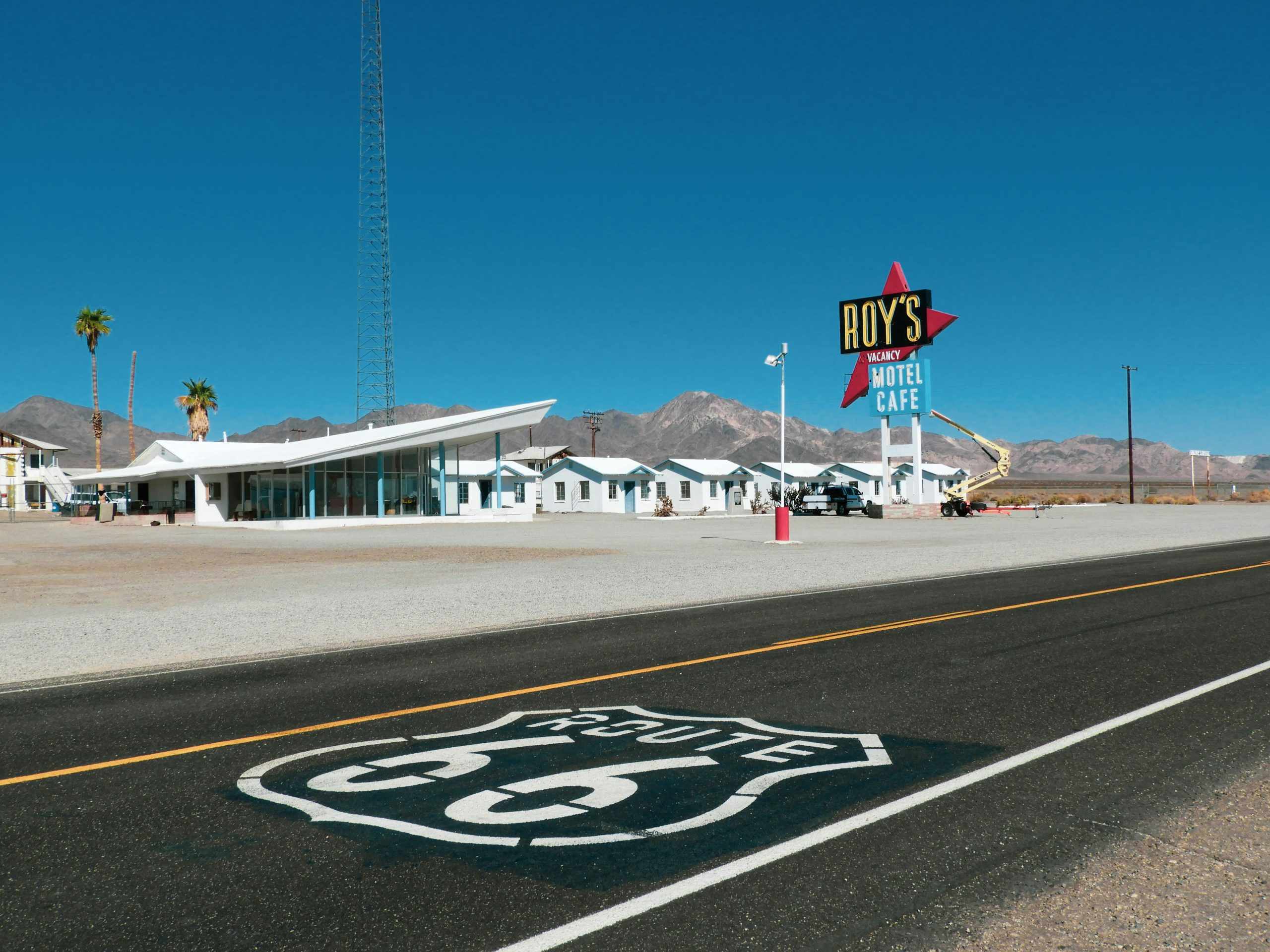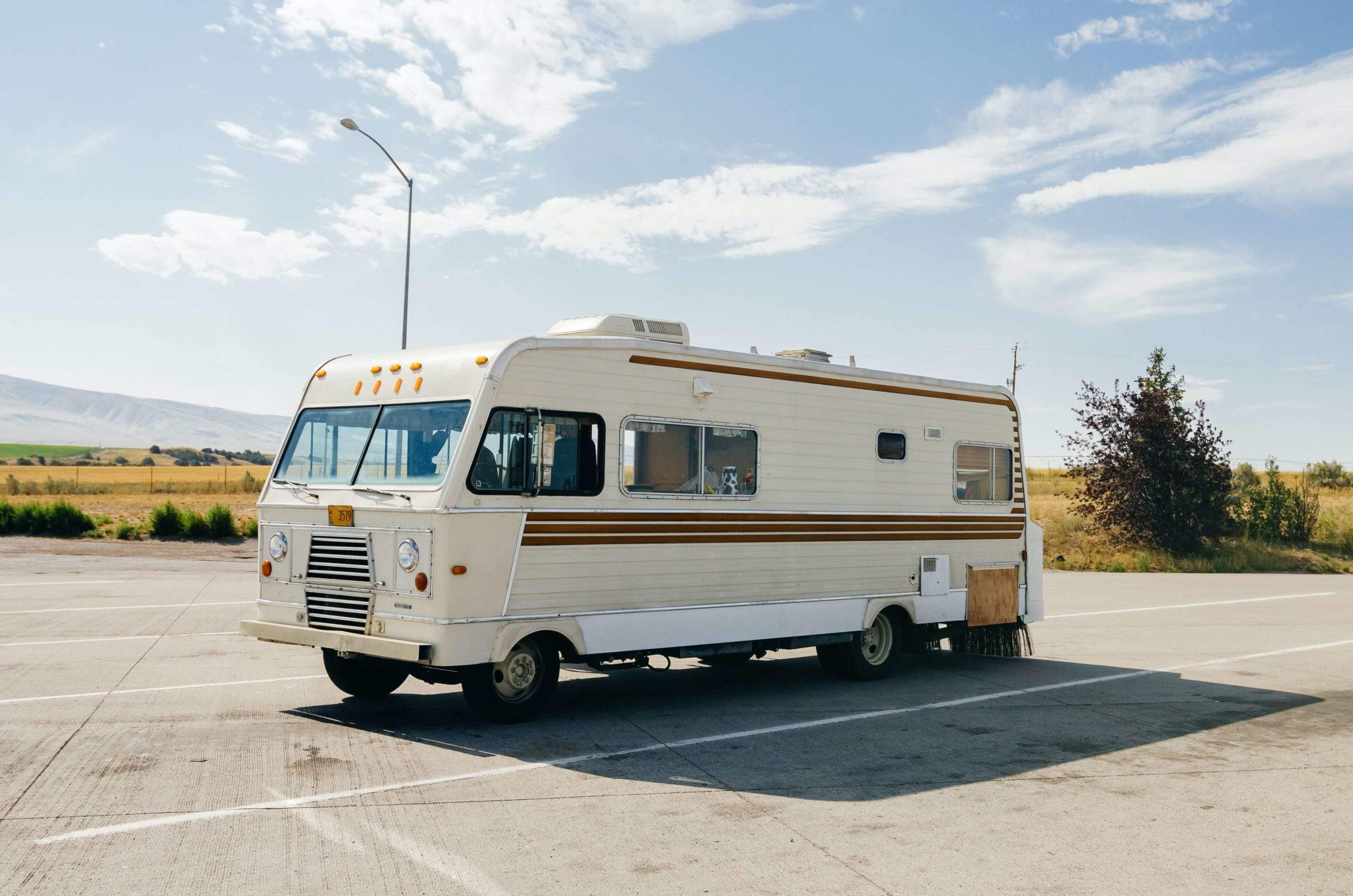Maintaining a healthy RV roof is key to keeping your rig on the road. If left neglected, wear and tear on RV roofs can turn into major issues, causing water damage, mold, and other problems that can render your rig inoperable. Even worse, these types of damages aren’t typically covered by extended warranties, so if something happens, you’re on your own to fix it.
Luckily, there are steps RV owners can take to keep their roofs in great shape year-round. We’re here to help by giving you some RV roof maintenance tips as well as best practices for avoiding roof damage.
RVs For Rent Near You
Best RV Roof Materials
You may be wondering what RV roofs are even made of. Your roof type will be a critical factor in how you tend to it, so it’s crucial to pick the right one that’s right for you. The three most popular materials are:
Rubber

Many RVs have rubber roofs. Rubber roofs can be one of two types: thermal polyolefin (TPO) or ethylene propylene diene monomer (EPDM).
TPO is the most common option as it is cost-efficient and white, which is excellent for keeping your rig cool. Other perks of TPO include a relatively easy installation process, resistance to dirt and mold, and energy efficiency. On the downside, TPO doesn’t last as long as other roofing options, and it doesn’t tolerate being left in the sun very well. Because of this, many owners find that they need to replace or repair TPO more frequently if not properly cared for.
EPDM is the other rubber option, often called “rolled rubber roofing.” The advantages of using EPDM are its affordability, ease of installation, and durability. Unlike TPO, EPDM can last up to twenty years, doesn’t scratch and scuff, and is less susceptible to leaks. It can also withstand higher temperatures and more direct sunlight. On the downside, its darker colors cause it to absorb heat, raising the temperature inside your rig.
If you’re looking for aesthetics and efficiency, TPO is the way to go. But if you value durability and longevity, EPDM is likely more up your alley.
Fiberglass

Fiberglass roofs are composed of synthetic materials and glass fibers and come in sheets or panels. The advantages of fiberglass roofing include its lightweight and customizable nature. Fiberglass is also a durable material that is also fire, rot, and rust-resistant.
On the downside, fiberglass can be expensive to repair if it’s damaged. And like TPO, it doesn’t always handle heat well. Prolonged exposure can result in thermal splits, which require roof repair or replacement.
Aluminum

Aluminum roofs are rarer these days as they can come with some hefty drawbacks. The main advantage is its longevity. However, even if it lasts, it doesn’t necessarily mean that it will look great in 20 years. It also must be fastened instead of glued down. It is susceptible to seam failure and can also hide leaks
The Right Installation
However, one of the biggest factors in having the best roofs out there isn’t related to the materials at all. For best results, take special care to follow proper installation procedures or enlist the help of a trusted professional. You’ll also want to make sure that you get your materials from a reputable manufacturer for the best quality product.
RV Roof Maintenance & Repair Tips
No matter what type of roof you have, it’s going to need regular maintenance. Most RV manufacturers suggest preventative maintenance once every three months. To make the routine easy, stock up on common repair supplies such as:
- Sealant & primer
- Caulking gun
- Seam roller
- Roof patches
- Roof cleaner
These are also handy to keep with you on the road, just in case you need to make a quick repair. Make sure that the supplies you purchase are designed for your specific roof material.
Cleaning
RV roofs, especially rubber ones, should be cleaned several times a year. Cleaning is essential for maintaining the roof’s appearance as well as its longevity. Never use cleaners that are made with petroleum solvents, abrasives, or citrus ingredients as these can weaken the strength and bonds of the materials.
Scrub the roof with a medium bristle brush (or with what the manufacturer recommends) to remove stuck on grime, sap, and mildew. Be sure to rinse the whole RV thoroughly. What comes off the roof will roll down the sides of your RV, and failure to rinse can result in streaking and discoloration.
Inspection
While you’re cleaning, do a thorough inspection of all seams and sealants. Even the smallest opening can cause significant damage. Repair any rips, tears, or holes immediately using Eternabond tape or an RV roof patch kit. Reseal any seams that seem to be damaged or peeling using RV roof lap sealant.. Take special care to look over the skylights, AC unit, vents, ladder, and roof rack, as these are all areas prone to accumulating dirt, mold, and cracks. If areas need repair, follow the instructions on the supplies that you purchase.
And of course, you’ll always want to use extreme caution when doing anything on a roof. Be careful of slick surfaces and watch where you are stepping.
Resealing & Recoating

Even if no major issues are visible, applying some fresh sealant can never hurt. Some RV experts also recommend resealing the seams in your RV roof as frequently as once a year. Again, you’ll want to be sure to buy products specifically designed for your roof material.
DIY vs. Professional RV Roof Maintenance
As we’ve established, maintaining your RV roof is essential for its longevity and to prevent costly repairs. Whether to handle the work yourself or hire a professional depends on several factors.
Check out this post for several DIY RV tips
Here’s a comparison to help you decide:
DIY RV Roof Maintenance
Pros:
- Cost Savings:
- No labor charges; you only pay for materials and tools.
- Convenience:
- You can perform maintenance at your own pace and schedule.
- Skill Building:
- Learn more about your RV and develop handy skills for future upkeep.
- Customizable Approach:
- Tailor your methods to your specific RV roof material and needs.
Cons:
- Time-Consuming:
- Cleaning, inspecting, and sealing can take several hours or days.
- Requires Knowledge:
- You need to know how to use the right tools and materials for your roof type.
- Safety Risks:
- Climbing on the roof or using chemicals without proper precautions can be hazardous.
- Limited Warranty Protection:
- Some warranties require professional maintenance to remain valid.
Best for:
- RV owners with basic handyman skills, time, and confidence in handling minor repairs.
Professional RV Roof Maintenance
Pros:
- Expertise and Equipment:
- Professionals have the experience and tools to handle complex repairs and detect hidden issues.
- Warranty Compliance:
- Ensures your roof warranty remains intact by meeting professional service requirements.
- Time Efficiency:
- Tasks are completed quickly and efficiently.
- Thorough Inspections:
- Technicians can spot potential problems that might go unnoticed by an untrained eye.
Cons:
- Higher Costs:
- Professional services can be expensive, especially for repairs or resealing.
- Scheduling Hassles:
- You may need to wait for an appointment, delaying urgent maintenance.
- Limited Customization:
- Professionals may stick to standard practices rather than tailoring methods to your preferences.
Best for:
RV owners with limited time, experience, or confidence in performing maintenance themselves.
Hybrid Approach
Many RV owners opt for a hybrid approach:
- Perform basic tasks like cleaning, resealing seams, and minor inspections themselves.
- Hire a professional annually for a comprehensive inspection or complex repairs.
RV Roof Damage Prevention
In addition to regular maintenance, there are some things that every RV owner can do to prevent damage.

First, keep it out of the elements and out of the sun while storing it. The sun, rain, and hail can be brutal on any rig that is left sitting. Prevent water and sun damage by storing your rig in an RV storage facility or investing in a roof cover that separates the roof from the elements. If you use a cover, make sure that it’s one designed for RVs. Other types of tarps may reduce airflow, resulting in moisture, mold, and mildew.
Second, avoid low-hanging branches and skip campsites under trees that look like they might drop limbs. Anything that might tear the roof membrane can cause significant damage.
RV Roof FAQ
Here’s a helpful FAQ to answer common questions about RV roofs and their maintenance:
How can I prevent leaks in my RV roof?
- Regularly inspect and clean your roof.
- Check for cracks, holes, or worn-out sealants.
- Use RV-specific sealants to maintain seams and joints.
Can I walk on my RV roof?
- Check Manufacturer Guidelines: Some RV roofs are designed to support walking; others are not.
- If walking is safe, distribute your weight evenly and avoid putting pressure on unsupported areas.
How do I repair a small hole or tear in my RV roof?
- Clean the area thoroughly.
- Apply an RV-specific patch or repair tape.
- Seal the patch edges with RV roof sealant to prevent leaks.
What are the signs of roof damage I should watch for?
- Cracks or splits in the roofing material.
- Water stains or discoloration on the interior ceiling.
- Soft spots indicating water damage.
- Peeling or deteriorated sealant.
How long does an RV roof last?
- Rubber Roofs (EPDM/TPO): 10-20 years with proper maintenance.
- Fiberglass Roofs: 20-30 years.
- Aluminum Roofs: 30+ years, depending on care.
How much does it cost to replace an RV roof?
Replacing an RV roof can range from $3,000 to $10,000, depending on the material and labor costs.
Can I install solar panels on my RV roof?
Yes, many RV owners install solar panels. Ensure the roof structure can support the panels, and use mounts designed to prevent leaks.
Is it okay to pressure wash an RV roof?
Not Recommended: Pressure washing can damage roofing material and force water into seams. Use a low-pressure hose instead.
Hit the Road
You can keep your roof in tiptop shape by merely following these relatively easy maintenance and damage prevention procedures. Don’t let a surprise roof leak ruin your RV road trip. Take the time to care for it before issues arise, and you’ll be sure your rig is always ready to hit the road.








